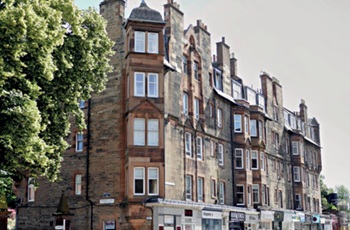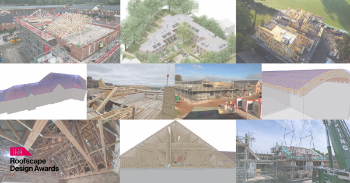Concept design
Contents |
[edit] What is concept design?
In the construction industry, concept design represents the design team's initial response to the client's requirements. Concept design generally takes place after feasibility studies and options appraisals have been carried out and a project brief has been prepared.
Concept design is generally considered to be the first true design stage. Options appraisals and feasibility studies may include the preparation of diagrams - for example exploring the relationships between functions - but these are for analytical purposes only and are not genuine design studies.
Some designers will differentiate between 'concept design' and 'scheme design'. In this case, the 'concept' is the initial design idea, whereas the 'scheme' develops the concept, taking on board more functional and practical considerations. Most project plans have now combined these two steps into the single stage 'concept design', or 'concept'.
Concept design is followed by 'detailed design' or 'developed design' during which all the main components of the building and how they fit together are developed and described.
[edit] What does concept design involve?
During the concept design stage, the consultant team will develop:
- The design concept.
- Outline specifications.
- Schedules of accommodation.
- A strategy for obtaining planning permission and building regulations approval.
- The cost plan.
- Procurement options.
- Programme and phasing strategy.
- Buildability and construction logistics.
- Development of the project brief.
On some projects, it may also include making an outline planning application or a detailed planning application.
For more information see: Traditional contract: concept design.
The make up of the consultant team will vary depending on the type, complexity and size of the project, but on most projects of moderate complexity, it will involve an architect, building services engineer, structural engineer and cost consultant. For more information see: Consultant team.
[edit] Concept design wth building information modelling
Where building information modelling (BIM) is being used during the concept design stage, the built asset might be represented by massing diagrams or 2D symbols representing generic elements, with some critical elements developed in more detail. The project information model may also include drawings, reports and other structured information directly related to the built asset and its facilities, floors, spaces, zones, systems and components.
BIM can also be useful at this stage to generate presentation material such as photo visualisations and 3D walk-throughs that help facilitate employer assessments and consultations with user panels, champions, and other stakeholders.
[edit] What happens at the end of concept design?
At the end of the stage, the consultant team will prepare a concept design report for the client which records the basic design concepts for the preferred option that might be worth further investigation in the detailed design stage. The concept design report will also identify any instructions required from the client to steer the general direction of the project.
The project brief will continue to develop as the concept design is prepared, but it is then frozen at the end of the concept design stage and change control procedures are introduced so that only changes agreed by the client can be introduced.
An application for planning permission might also be made during the concept design stage. This is likely to be an outline planning application if made at the beginning of the stage or a detailed planning application if made once the concept design is complete.
[edit] Find out more about the tasks carried out during concept design
Detailed descriptions of the design tasks that are performed during this stage can be found at:
- Traditional contract: concept design.
- Concept architectural design.
- Concept architectural design checklist
- Concept structural design.
- Concept services design.
[edit] Related articles on Designing Buildings
- Brainstorm.
- Briefing documents.
- Concept design report.
- Concept architectural design.
- Concept architectural design checklist.
- Concept structural design.
- Concept services design.
- Design.
- Design methodology.
- Design studies.
- Detailed design.
- Feasibility studies.
- Mood board.
- Options appraisal.
[edit] External references
Featured articles and news
Moisture, fire safety and emerging trends in living walls
How wet is your wall?
Current policy explained and newly published consultation by the UK and Welsh Governments.
British architecture 1919–39. Book review.
Conservation of listed prefabs in Moseley.
Energy industry calls for urgent reform.
Heritage staff wellbeing at work survey.
A five minute introduction.
50th Golden anniversary ECA Edmundson apprentice award
Showcasing the very best electrotechnical and engineering services for half a century.
Welsh government consults on HRBs and reg changes
Seeking feedback on a new regulatory regime and a broad range of issues.
CIOB Client Guide (2nd edition) March 2025
Free download covering statutory dutyholder roles under the Building Safety Act and much more.
AI and automation in 3D modelling and spatial design
Can almost half of design development tasks be automated?
Minister quizzed, as responsibility transfers to MHCLG and BSR publishes new building control guidance.
UK environmental regulations reform 2025
Amid wider new approaches to ensure regulators and regulation support growth.
The maintenance challenge of tenements.
BSRIA Statutory Compliance Inspection Checklist
BG80/2025 now significantly updated to include requirements related to important changes in legislation.
Shortlist for the 2025 Roofscape Design Awards
Talent and innovation showcase announcement from the trussed rafter industry.
























Comments
[edit] To make a comment about this article, click 'Add a comment' above. Separate your comments from any existing comments by inserting a horizontal line.
This is exactly what i was searching for. Many people don't know how to convey what a concept design is. This article was very beneficial and i am sure it will help many budding architects to learn what a concept design in architecture actually means.